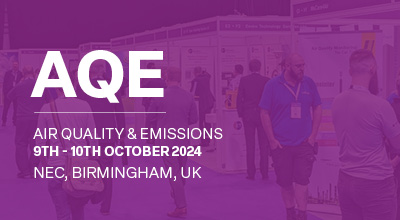| Abstract Title: | Regulation of Hydrogen Combustion: Emissions reporting and compliance assessment |
| Presenter Name: | Mr David Graham |
| Co-authors/Co-presenters: | Dr Steve Griffiths Dr Jon Runyon |
| Company/Organisation: | Uniper |
| Country: | United Kingdom |
Abstract Information :
In Europe, the mass concentration of nitrogen oxides (NOx) in gas turbine flue gas is regulated by setting an Emission Limit Values (ELV) in mg/m3 at a reference condition of 15% O2, dry, 273.15K, 101.3 kPa. Correction of raw measured NOx concentrations, in parts per million by volume, to these reference conditions is performed routinely, using standard formulas, and ensures that dilution of the flue gas by excess combustion air and by water vapour is taken into account. The major constituents of the dry flue gas are carbon dioxide (CO2), arising from the oxidation of carbon in the fuel, along with oxygen and nitrogen from the combustion air. The flue gas volume, at reference conditions, is similar for a range of fossil fuels. However, since hydrogen is a carbon free fuel, the flue gas does not contain CO2 and the resultant flue gas volume is substantially lower. Relative to hydrogen, the flue gas volumes from fossil fuel combustion are therefore about 40% higher on this energy specific basis. Emissions are therefore no longer comparable at the usual reference conditions. Effectively, the NOx concentration is over-corrected by 37% when compared with natural gas. This can be addressed by regulating NOx concentration in units of mg/MJ (net thermal input). The mass concentration (mg/m3) can be simply multiplied by an appropriate Fuel Factor (Nm3/MJ) to give a NOx concentration in mg/MJ. The emissions are then comparable so that, when switching from natural gas to hydrogen, the same energy input produces the same NOx concentration, in mg/MJ, and the same mass release rate from the stack, in mg/s. This approach is used for the regulation of domestic appliances in Europe. An alternative approach, if retaining an ELV in mg/m3, is to apply an uplift factor of 1.37 to achieve parity with natural gas. An ELV of 50 mg/m3 for natural gas is then equivalent to an ELV of 68.5 mg/m3 for hydrogen, for example. Test laboratories and operators need to be aware of these issues when reporting and assessing emissions data. Having achieved parity in emissions reporting, consideration then needs to be given to the changes in the underlying combustion and emissions performance when fuel switching from natural gas to hydrogen. That is, it may be necessary to further increase a NOx ELV in mg/m3 to account for increased fuel reactivity and/or flame temperature, for example. This issue will be briefly explored within the context of gas turbine combustion systems.



